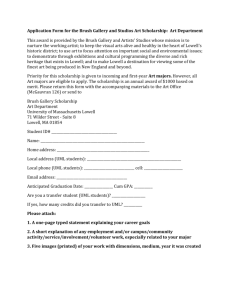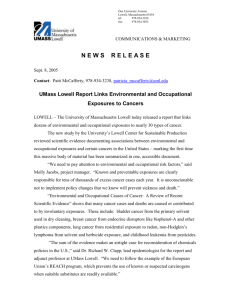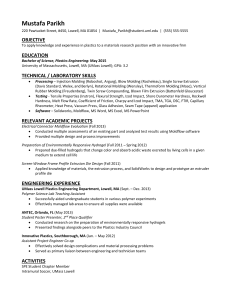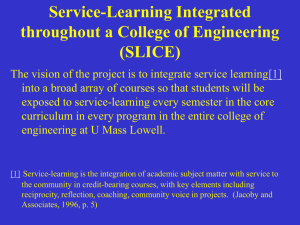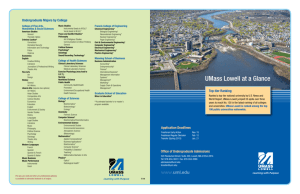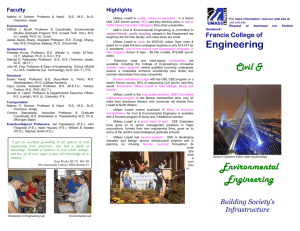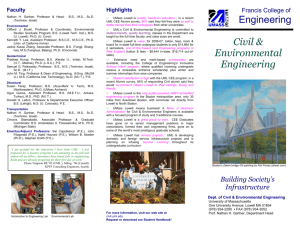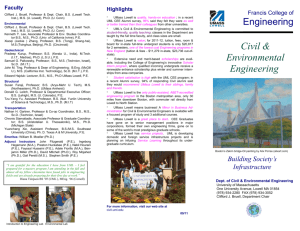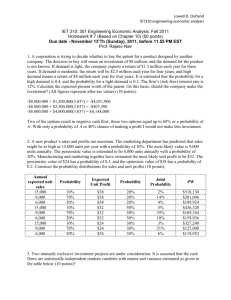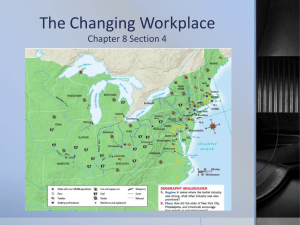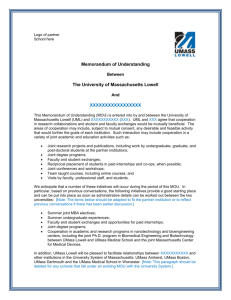New Report on OSHA Identifies 7 Priority Reforms to Protect Worker
advertisement
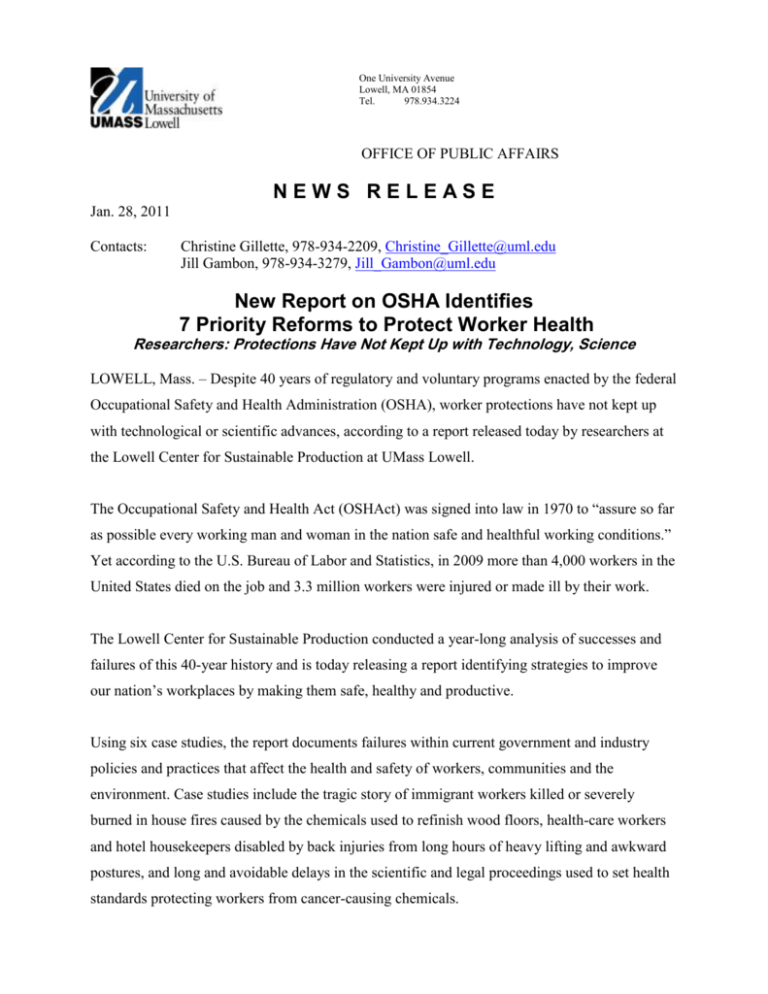
One University Avenue Lowell, MA 01854 Tel. 978.934.3224 OFFICE OF PUBLIC AFFAIRS NEWS RELEASE Jan. 28, 2011 Contacts: Christine Gillette, 978-934-2209, Christine_Gillette@uml.edu Jill Gambon, 978-934-3279, Jill_Gambon@uml.edu New Report on OSHA Identifies 7 Priority Reforms to Protect Worker Health Researchers: Protections Have Not Kept Up with Technology, Science LOWELL, Mass. – Despite 40 years of regulatory and voluntary programs enacted by the federal Occupational Safety and Health Administration (OSHA), worker protections have not kept up with technological or scientific advances, according to a report released today by researchers at the Lowell Center for Sustainable Production at UMass Lowell. The Occupational Safety and Health Act (OSHAct) was signed into law in 1970 to “assure so far as possible every working man and woman in the nation safe and healthful working conditions.” Yet according to the U.S. Bureau of Labor and Statistics, in 2009 more than 4,000 workers in the United States died on the job and 3.3 million workers were injured or made ill by their work. The Lowell Center for Sustainable Production conducted a year-long analysis of successes and failures of this 40-year history and is today releasing a report identifying strategies to improve our nation’s workplaces by making them safe, healthy and productive. Using six case studies, the report documents failures within current government and industry policies and practices that affect the health and safety of workers, communities and the environment. Case studies include the tragic story of immigrant workers killed or severely burned in house fires caused by the chemicals used to refinish wood floors, health-care workers and hotel housekeepers disabled by back injuries from long hours of heavy lifting and awkward postures, and long and avoidable delays in the scientific and legal proceedings used to set health standards protecting workers from cancer-causing chemicals. UMass Lowell News Page 2 of 3 “We found that ineffective workplace health and safety protections are not simply the result of limited enforcement. They are the result of multiple overlapping factors, including conflicts between agencies, lack of worker participation in decision-making processes, the politicization of science and the conflicts between economic and political interests,” said Prof. David Kriebel, the report’s lead author and chairman of the Department of Work Environment at UMass Lowell. “As the recent investigations of the sinking of the Deepwater Horizon demonstrate, adding more inspectors or having more regulations is not necessarily the answer.” The report identifies seven high-priority strategies that could have important impacts on making workplaces safer. The suggested reforms include comprehensive workplace injury and illness prevention programs that tap worker and employer knowledge and proven approaches to quality assurance to systematically identify and control workplace hazards. The report also identifies strategies that other agencies and organizations can pursue to improve safety and health at work without waiting for changes to the federal OSHA. These include promoting “Prevention through Design” initiatives to design-out hazards and make jobs, products and materials inherently safer. While President Obama recently ordered a review of regulations to ensure that they do not have a negative impact on business, the report notes that the current regulatory approach to protecting workers is not only inefficient, it is inadequate given the broad changes to science, technology and policy necessary to protect workers. From avoidable falls among construction workers, preventable back injuries among health-care workers, and chemical-related cancers and lung disease, the report finds that work-related injuries and illnesses could be prevented if chemicals, production process and technologies were designed with worker health in mind. “With current interest in greening the economy and in getting people back to work, stimulating innovation that designs out hazards holds great promise for breaking free of the false dichotomy of safety versus profit; it doesn’t have to be a trade-off,” said Pia Markkanen, report author and research professor at UMass Lowell. UMass Lowell News Page 3 of 3 The full report and executive summary are available on the Lowell Center for Sustainable Production’s web site: www.sustainableproduction.org. UMass Lowell, with a national reputation in science, engineering and technology, is committed to educating students for lifelong success in a diverse world and conducting research and outreach activities that sustain the economic, environmental and social health of the region. The university offers its 14,000 students more than 120 degree choices, internships, five-year combined bachelor’s to master’s programs and doctoral studies in the colleges of Arts, Sciences, Engineering and Management, the School of Health and Environment, and the Graduate School of Education. www.uml.edu. The Lowell Center for Sustainable Production at UMass Lowell uses rigorous science, collaborative research and innovative strategies to promote communities, workplaces and products that are healthy, humane and respectful of natural systems. The Center is composed of faculty, staff and graduate students at the University of Massachusetts Lowell who work collaboratively with citizen groups, workers, businesses, institutions and government agencies to build healthy work environments, thriving communities and viable businesses that support a more sustainable world. www.sustainableproduction.org
